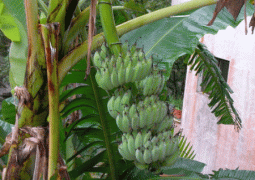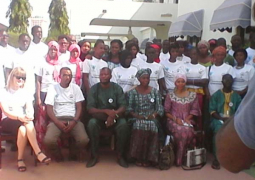In
the preceding segment of this piece, discussion centered on the Gambia as a
tourism destination and it was pointed out that the Swedes were the
trailblazers of Gambia Tourism, given that the Smiling Coast was “accidentally”
discovered by Bertl Harding, who flew in the first cohort of air chartered
tourists in the mid 1960s.
The
push (motivation per se why people decide to take a holiday) and pull factors
(why tourist decide to visit a particular destination or resort) were outlined.
It was underscored that, the Gambia’s greatest edge is the genuinely hospitable
people. It was further pointed out that the push factor for the trail blazers
of Gambia Tourism included the desire to escape the harsh winter condition in
northern Europe and relish in the winter sun, gorgeous beaches, and the
agreeable climate, but the main pull factor in my view included the legendary
hospitality of the Gambian people, unsophisticated charm, social cohesion,
religious tolerance, exotic culture and above all the friendliness of the
locals
These
attributes in a nutshell constitute the unique selling points of destination
Gambia. Generations of tourists have come and gone, years have gone by,
millions of tourists have come and gone over the years from far and wide,
tourism as a global phenomenon continues to evolve, but the Gambian people
remain true to these qualities/credentials and continue to put a smile on their
face and the face of their visitors despite changing realities and
circumstances.
Having
said that it is imperative to ask the question “who is the tourist”? In this
regard it is worth pointing out that the early attempts to define a tourist
were undertaken by official organizations interested in monitoring the growth
of international tourism. As such according to the League of Nations in 1933 ‘a
tourist is defined as someone who travels for a period of 24 hours or more in a
country other than that in which he usually resides’. Given the limitations of
this definition, broader attempts were undertaken at the level of the United
Nations World Tourism Organization to define a tourist through the UN
Conference on International Travel and Tourism in 1963 and agreed the term
“visitors”. This covers two main categories – Tourists – temporary visitors
staying for at least 24 hours whose purpose could be defined as either leisure
or business, and excursionists- temporary visitors staying for less than 24
hours, including cruise ship passengers, but excluding travelers in transit,
Such definitions are important when making
comparative assessment of tourism, but limitations are still evident given that
such adopted standards still ignore the rise and range of domestic tourism.
Thus most destinations have come up with their own official definition for
internal use. For example, the official ‘White Paper on Sustainable Tourism
Development and Promotion in the Western Cape of South Africa’ defines a
tourist as “a person who travels away from home, staying away for at least one
night”. It further states that “a
tourist could be a domestic tourist (for example a resident of Johannesburg
staying one night in Cape Town), a regional tourist( for example a visitor from
Zimbabwe spending one or more night in
South Africa) or an overseas
tourist( for example a resident of Germany staying one or more nights in South
Africa). A tourist travels for different purposes including business, leisure,
conferences and incentive
The
Gambia – a destination for leisure
Since
the inception of tourism destination Gambia was seen as an ideal place to
escape the harsh winter months of Scandinavia where Europeans would enjoy not
only sea, sun and sand, but also experience the excitement of a an authentic
Africa holiday. More over due to its proximity, also offered a new opening for
exotic, but affordable holiday for an increasing number of European tourists.
The number of tourists increases from 300 hundred in 1965 to 25,000 in 1976,
90,000 in 1994 and this swelled to 171 ,200 in 2013 to 161,127 in 2017.
The
overwhelming majority of these tourists are on leisure holidays (96%) attracted
by sea, sun and sand and according to authoritative surveys the average length
of stay has been two weeks. . This type of tourism is mainly dominated by tour
operators and is highly seasonal in nature, concentrated on the coastal areas
and influenced by the winter sun. Thus
there is a mix bag of implications and these are quite visible in the Smiling
Coast including seasonality of tourism and seasonality /lack of employment
during the off season otherwise known as green season. This type of tourism is
focused more on the relative economic gains of tourism and the need to fill hotel beds, whilst
absorbing the negative implications that go hand in glove with this form of
tourism...
With
this type of tourism simply pot package tourism, patterns of tourist behavior
have an important impact both on the structure of facilities within particular
resorts and the relationship that tourists have with the host population.
According to Krippendorf (1987) as encapsulated in the book “Critical Issues in
Tourism” having arrived at the scene of their dreams, many tourists behave in
much the same way as they do at home. For them the break with routine is a
functional and spatial one, in that they do not have to work and are away from
home. The holiday resort is an exotic backdrop, against which they can play out
the usual pattern of behavior. Such traits are common, however only to the
point of enjoying home comfort as, for many tourists, aggressive almost
“colonialist” behavior become a norm while on holiday. Holidaymakers become
totally self- oriented, having little regard for others especially the host
population.
Such type of tourism characterizes the first
wave of tourism development in The Smiling Coast and comes with a catalogue of
negative vices such as rising prostitution, and the rise of bumsterism, high
leakage of revenue, highly seasonal nature of tourism and seasonality of
employment, very susceptible to change and economic fluctuations. The pros
include foreign exchange generation, spreading development and the multiplier
effects, complimenting other economic activities, breaking down social and
cultural barriers, and reinforce preservation of heritage and traditions and
promotion of international peace.
New
Emphasis on niche and Eco-Tourism/ Responsible Tourism
Given
the negative impacts of mass tourism there has been a gradual shift in focus to
other more beneficial and sustainable forms of tourism such as Eco – tourism
and this refers to “environmentally and socially responsible travel to natural
or near natural areas that promotes conservation, has low visitor impact and
provides for beneficially active socio – economic involvement of local people”.
Another definition by Gardner (49) refers to ecotourism as “purposeful travel
to natural areas to understand the culture and natural history of the
environment taking care not to alter the integrity of the ecosystem, while
producing economic opportunities that make the conservation of natural
resources beneficial to local people”.
Responsible
Tourism, Eco- tourism, community tourism have become buzzwords in the global
tourism market place mainly due to the fact that tourism as a global industry
is evolving by leaps and bounds due to changes in lifestyle and the impact of
robust technological development. Tourists are becoming even more discerning environmentally
conscious and increasingly there is growing preference for customized and
tailor made products to suit the evolving needs of tourists. Consequently, in
recent times, there has been increasing demand for quality, good value holidays
and for new holiday ideas to suit the need of this new type of tourist. Thus
the search continues and Makasutu Culture Forest, Sandele Eco Retreat lead the
way.
Destination
Gambians reputation as a one river country, relatively rich fauna and flora
coupled with the conviviality of the people located within a limited geographic
space have made it an ideal destination for eco –tourism. Consequently several
initiatives have been deployed including the crafting of an eco-tourism
strategy as well as the Responsible Tourism strategy all geared towards luring
the eco –minded tourists and other segments within the leisure category
including birdwatchers, history buffs,, ethnic travelers who like
culture seekers are drawn by their desire to rediscover their roots and
interested by how other people express their culture via distinctive customs,
food, art, music etc, environmental travelers, adventure seekers,, recreational
travelers, entertainment seekers , interpersonal travelers etc.
According
to many informed studies, global travel demand has almost turned full 180
degrees. The group tourists that dominated demand in the early development
phase currently form the lower end of the market. Many tourists now seek
intensive travel experience, where real things matter. Life style features such
as mind- body, wellness spas, and real life encounters with cultures and people
and exclusive shopping experiences have been added on in many destinations
as the in –thing for the discerning
tourist.
Invariably
the key to successful management of tourism service providers in this mix will
lie in the capacity of their businesses to continuously and systematically
adapt to the constant changes affecting the sector. In such as environment the
competitive advantage of enterprises will depend on their capacity for
innovation and creation of added value in their products and services.
As
such several of the more innovative hoteliers and other tourism business unit
entrepreneurs are crafting niche accommodation facilities and rethinking
holiday ideas to make the most of the new demand at upper end of tailor made
products.
Self
Catering Accommodation – a rising trend
Amidst
these global trends destination Gambia is also following suit. Most hotels
especially in the four and five category have been refurbished and added new
products such as spas and wellness retreats such as the wellness/spa facilities
at the Kairaba Beach Hotel and Coco Ocean Resort to entice the discerning
tourist. In the self catering front, which are also trending and certain smart
entrepreneurs such as the Kunta Kinteh Complex boss Solomon Tamba has been
carving a niche in self catering accommodation and his experience is a success
story in the search for the new discerning tourist. Nestled on the serene and
sandy Kotu Beach, the Kunta Kinteh Beach Bar provided a haven for tourists who
are looking for a more loaded experience to relax, wind down and enjoy local
culinary delights and at the same time enjoy local ambience. .
“What motivated me most was the desire to meet
the needs of my customers/tourists, who have always challenged me to provide
self catering accommodation on the fringes of the beach bar”, Solomon
explained. “After so many years
operating on the beach and interacting with my vast clientele (tourists) both
in Europe and locally, I realized that self catering is trending and I went for
it and thank God today I can’t complain as my facilities are fully booked year
round”, Solomon a usually very confident and inspiring person, explained.
Today
the Kunta Kinteh Complex has evolved in to a fully fledged hospitality out fit
on the beach featuring 15 (fifteen) self
catering trendy apartments all designed
to suit the taste of his diverse clientele
and the complex also provides a range of services including hair salon,
tailoring shop, massage and pedicure and manicure services, African Craft and
batik, tailor made excursions, daily fresh fish menu, BB Q every Sunday, ballet dance, and cultural
night thus “creating a perfect African ambience on the beach”.
Youth
Travel and Educational Tourism on the rise
According
to the latest GTBoard survey almost 8% of tourists to the Smiling Coast in 2016
-2017 tourist season were students on educational visits. This figure, though
modest, underscores the need to pay more attention to this niche, which is
growing in significance in global tourism. Also according to the Btadford Group
– a US based tourism agency “it is also
a well known fact that the millennials also represent the largest growth market
for travel” and based on the BBrief
survey “they travel more often than other generators for business 4.7 times
each year and leisure 4.2 per year. They already spend roughly US 200 billion a
year on travel as 22% of all travelers and that spending will increase.”
In
niche tourism there is great promise for destination Gambia and the search for
the trendy, high spending and discerning tourist continues, but first we have
to overcome the perennial and emerging challenges including ageing rural
tourism infrastructure, insufficient funds to create standard facilities and
craft exciting products and tackle product obsolescence head on. A lot of tourism potentials are also tied to
the River Gambia, but the facilities associated with travelling on the river are
still very underdeveloped. No wonder to emerging home grown tourism
entrepreneurs such as the Proprietor of Kunta Kinteh Complex Mr Solomon Tamba
“the emphasis should be more towards promoting The Gambia as an interesting,
exciting, and value for money destination.” He added “I also want to join those
calling for a diversification of the Gambia Tourism Product that will appeal to
a broad spectrum of tourists” Solomon concluded.
Meanwhile,
the search for the ideal tourist who will not only visit the Smiling Coast, but
leave a positive footprint continues, a tourist who will be “rewarded with a
great experience in the Smiling Coast and whose visit will in turn lead to
growth in tourism numbers, extended stays, increased spend, reduced seasonality
and improved geographic spread.”
By
Lamin Saho
The
author is a tourism and marketing consultant and was formerly Senior Tourism
Officer (National Tourist Office)-2000- 2002. Former Director of Marketing,
GTA/GTBoard/ (2006-2012) and briefly served as Director of Planning, Ministry
of Tourism & Culture (2012)





